Exploring Stewart, BC and Hyder, Alaska
I reached Stewart at 3:00 pm on Easter Sunday. Although very quiet, I was surprised by the amount of activity – I didn’t know that several mines are in exploration, development of production phases. This hoist is moving containers on the trailers, I think to increase axle loadings now that the trucks are going to be on a paved highway instead of gravel mining roads.
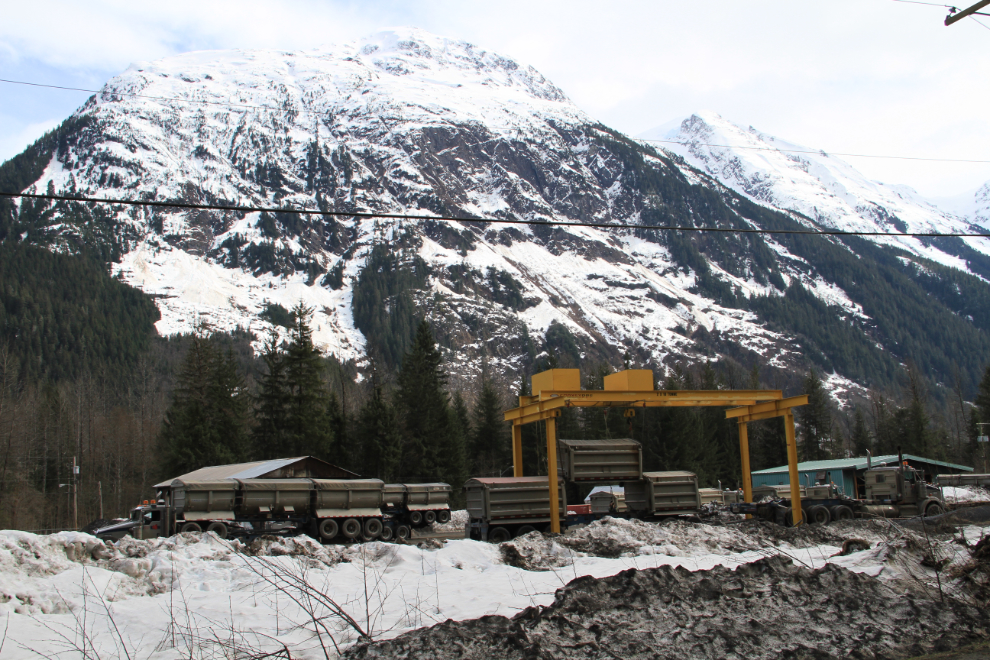
My first stop was at the home I lived in 39 years ago – House 1701, Granduc Subdivision. It’s on Hill Road, at the base of what was the ski hill. I could tell you Stewart stories all day, but I loved the place then, and I love it now. I didn’t love the company I worked for, however.
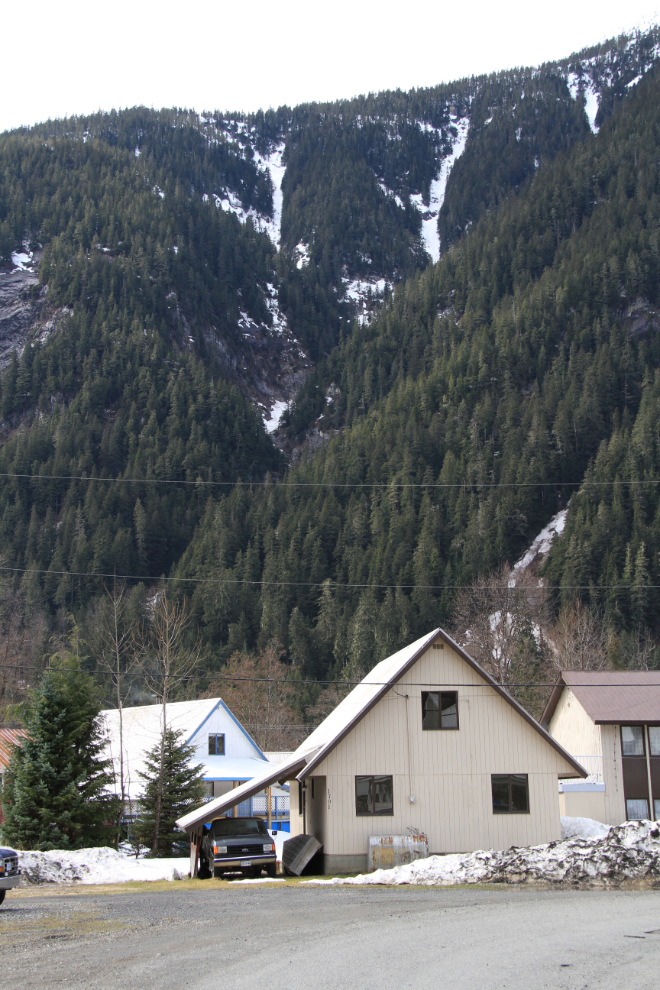
The old Granduc apartment building has been abandoned for many years. A woman I met outside it said that she heard that it’s been sold and is going to be rebuilt. Dozens of townhouses around it are in similar derelict condition.
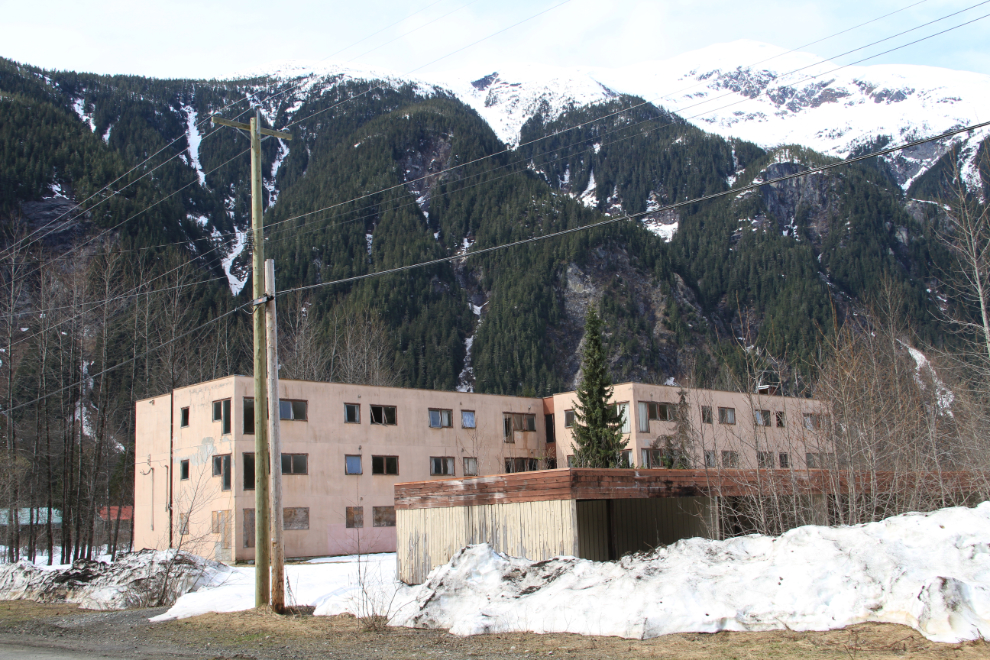
In the 1970s this was the New Naked Spud restaurant. Yes, I am serious 🙂
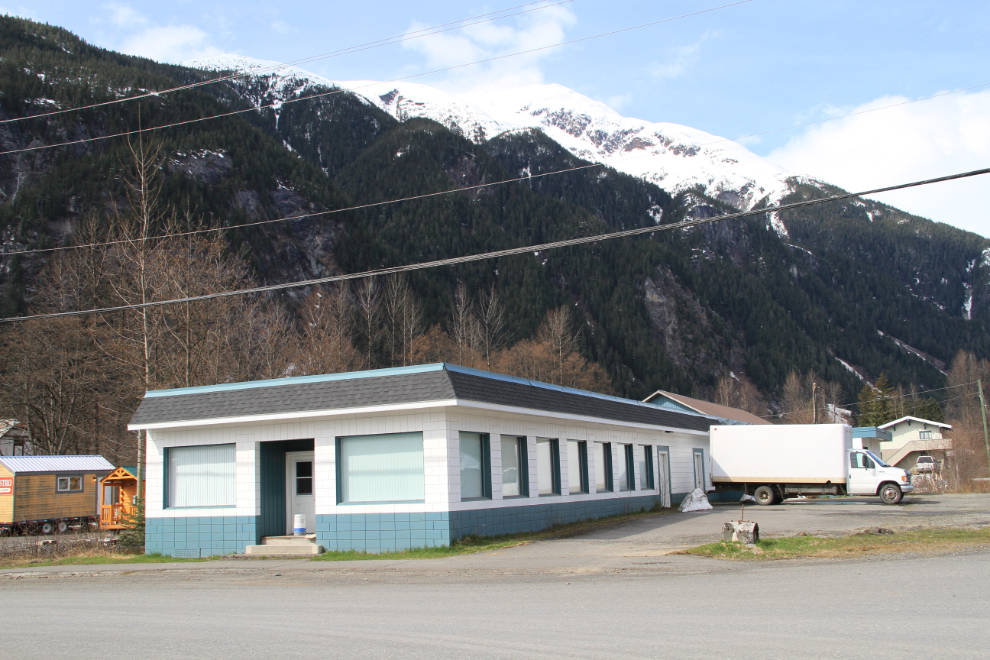
This was the Empress Hotel, built in 1908 by a German financier, Alvo Von Alvensleben. Nothing but the best went into the hotel, and the initial cost is said to have been $100,000. The hotel opened for business in July 1910, as construction began on the Portland Canal Short Line Railway which would connect Stewart with the outside world – only 14 miles of track was ever laid, though.
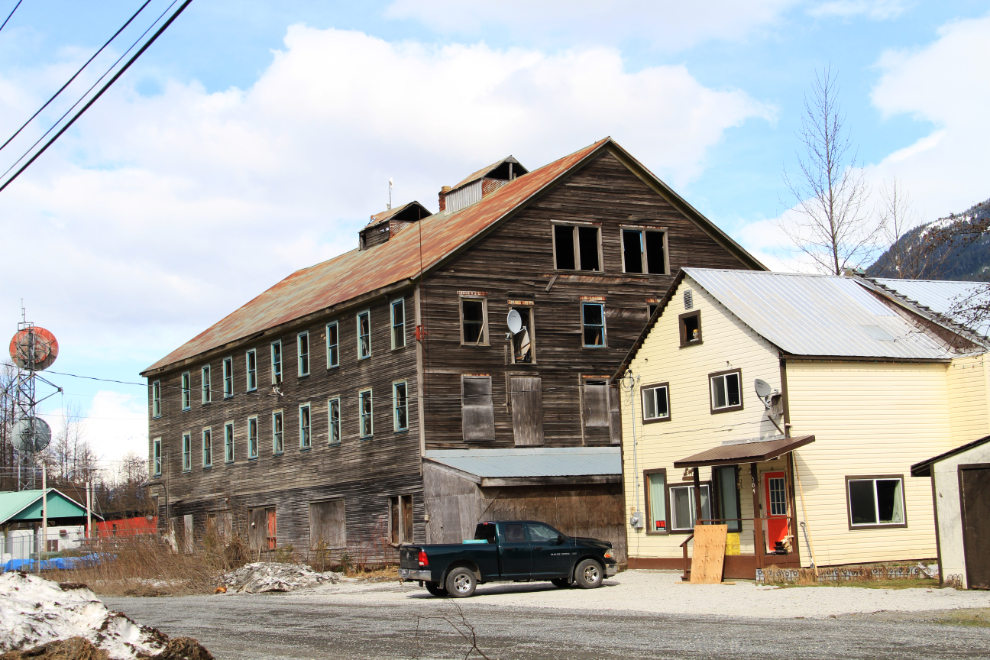
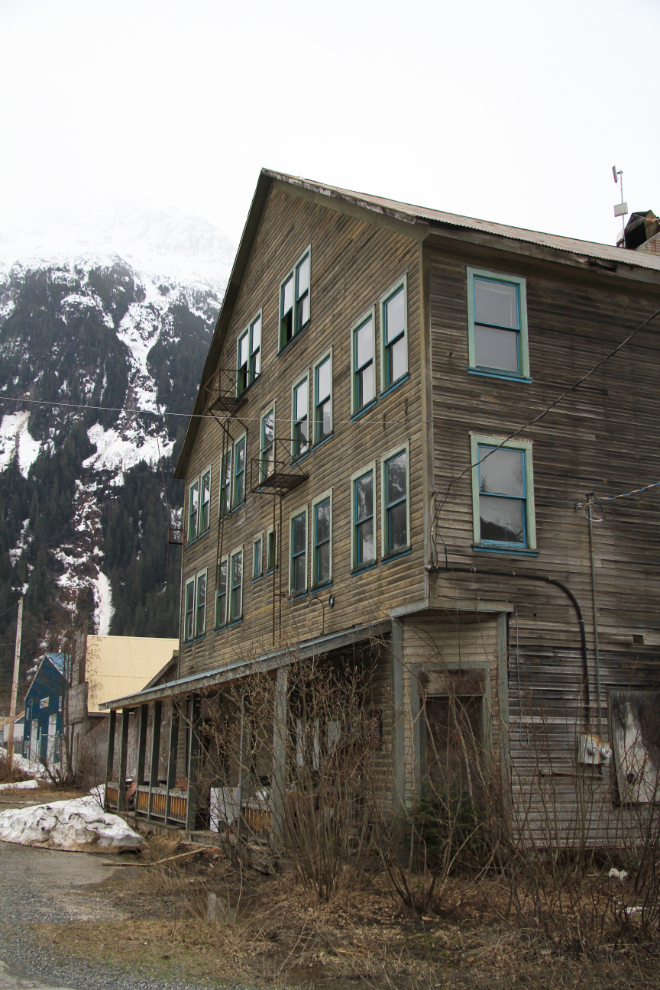
There are old pieces of mining and to a lesser degree logging equipment scattered everywhere in Stewart. I haven’t found a guide to vintage Caterpillar haul trucks, but I’d guess this one as being from the 1960s – perhaps an early Granduc model.
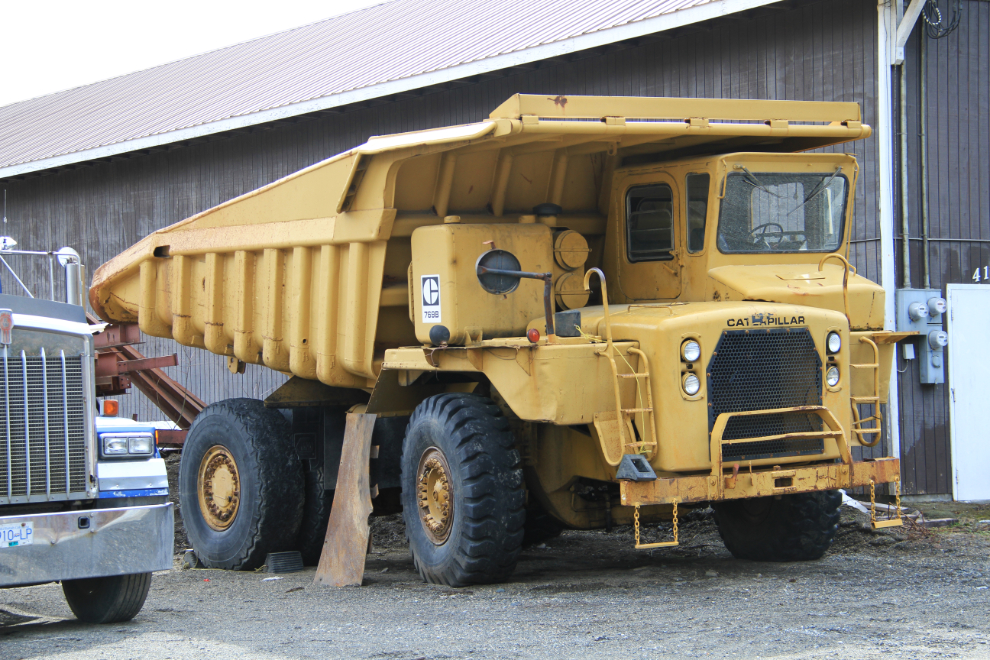
The head of Portland Canal, looking south at the Stewart dock. I flew to Stewart in April 1975, and my wife and new Chevy Blazer followed on the freighter Northland Prince, which docked there.
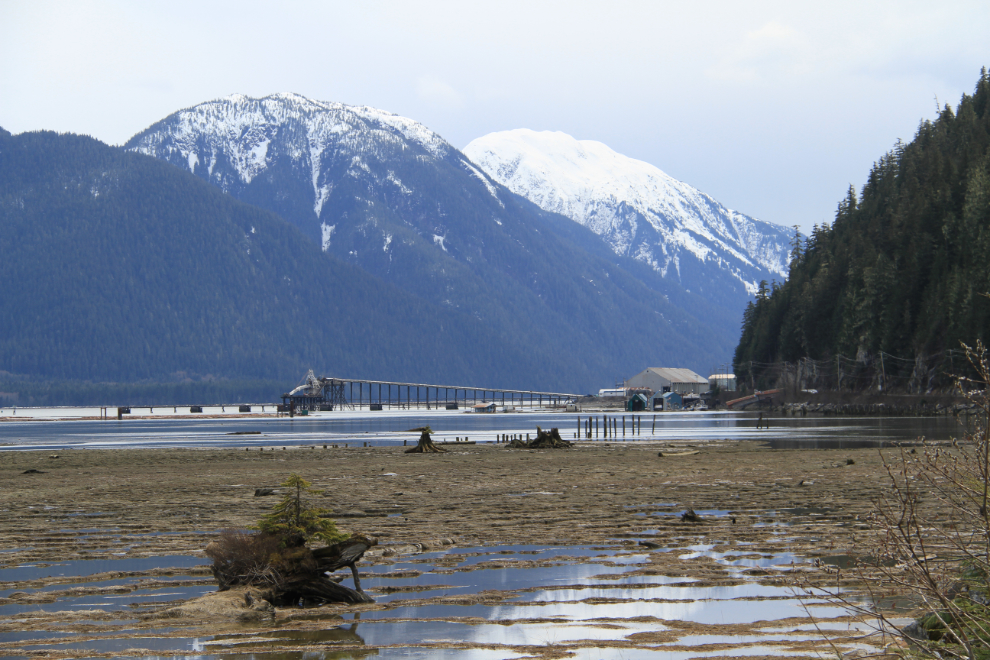
The trees along the road to Hyder, Alaska, are all dripping with this moss-type stuff.
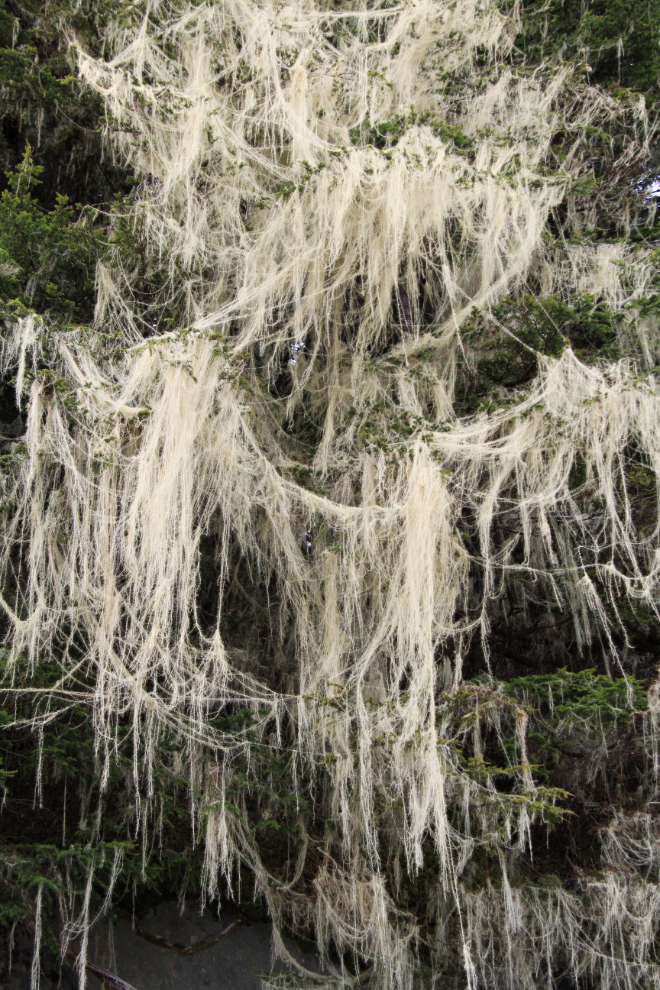
There is apparently a granite quarry up there. A woman in Hyder said that the blasting practically knocks her over, despite those blasting mats at the lower right.
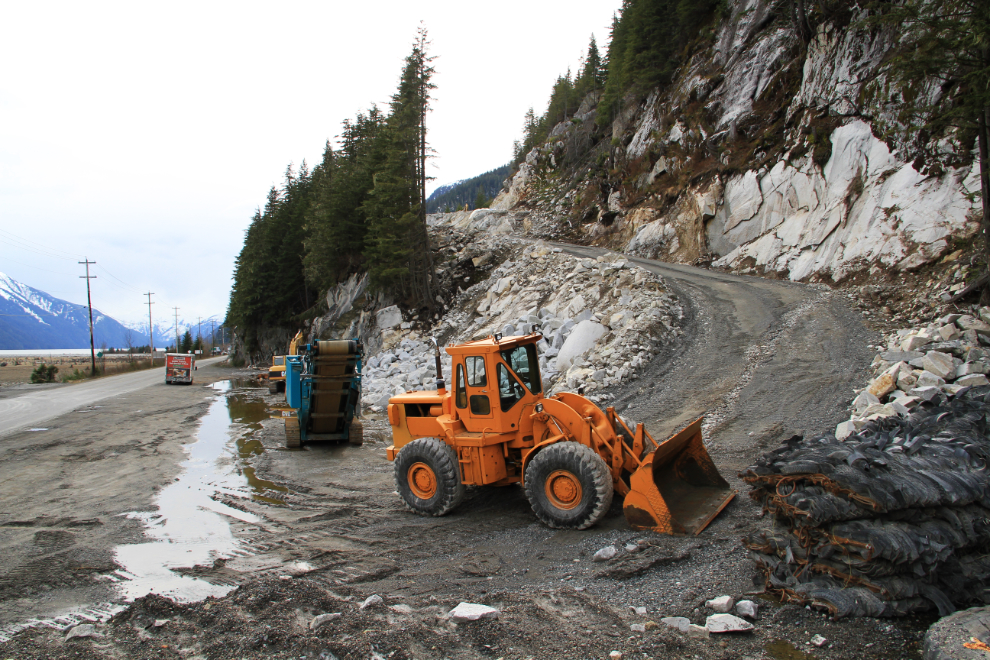
The town of Hyder was originally built on those thousands of pilings.
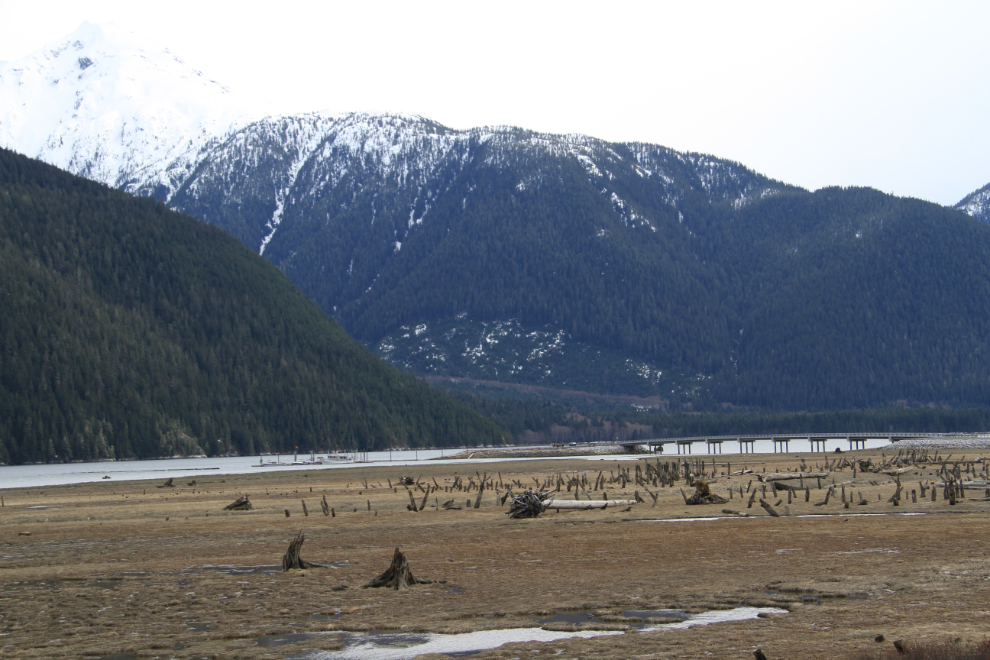
Although there is no Customs inspection post going into Alaska, there is coming back into Canada. To avoid any hassle, I asked the CBSA officer at the desk if there would be a problem taking a loaded cargo truck into the States and was told that there might be. So I left the truck in Canada and walked over.
At the far left is the Canada / United States border monument. The little stone building, Army Engineer Storehouse No. 4, was Alaska’s first masonry building when it was built in 1896 under the direction of Captain David D. Gaillard during his exploration of Portland Canal.
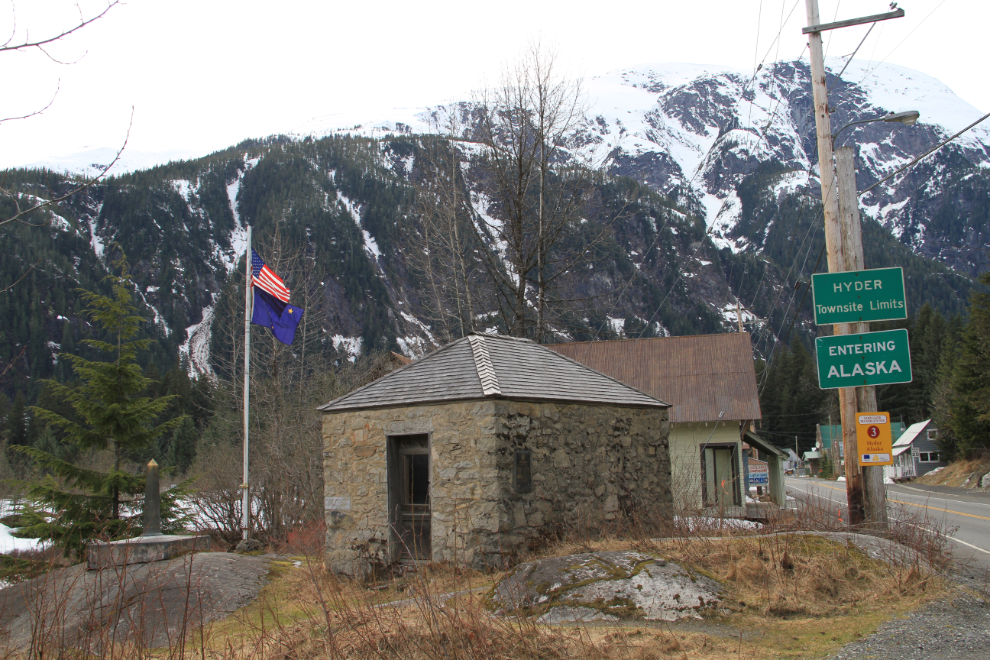
As far as I walked there were only two businesses open – a gift shop and the laundry. In Hyder it can be hard to tell which buildings might be open in the summer, but I think it’s a safe bet that this one won’t be.
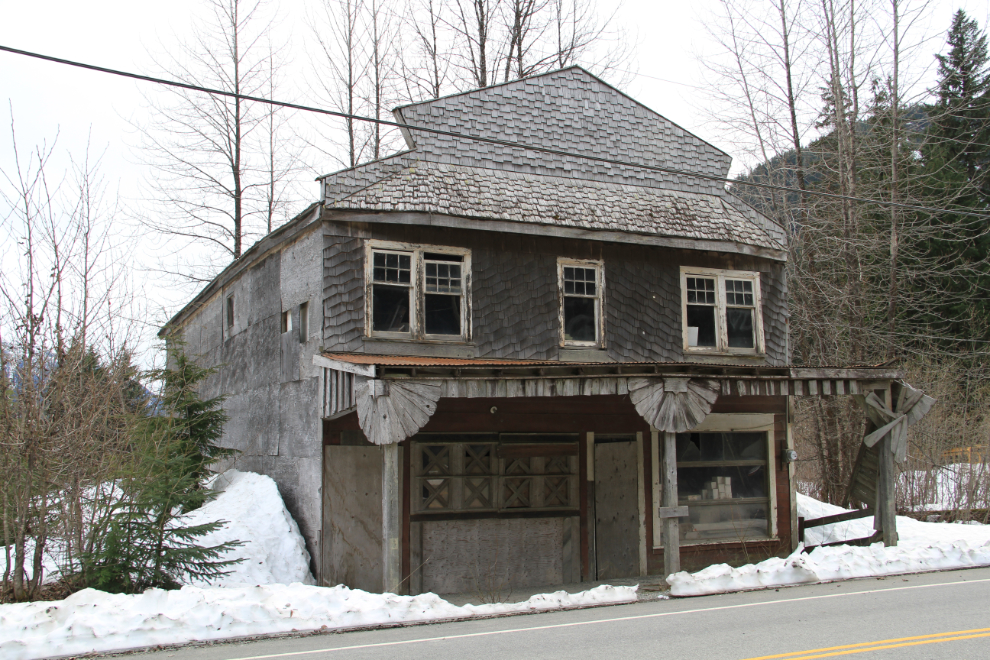
The large sign on the Sealaska Inn declares Hyder to be Mile 0 of the Alaska-Yukon Hwy. There’s no such designation of a highway officially, but sure, why not? 🙂
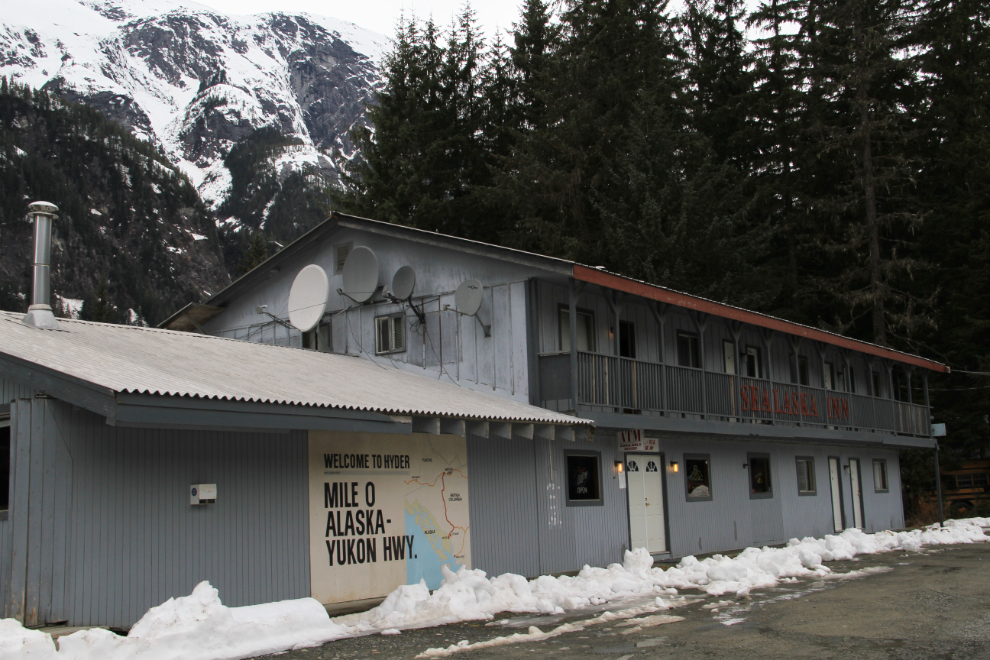
Getting Hyderized at the Glacier Inn used to be a big deal, but now it’s just an expensive shot of 190-proof grain alcohol! It used to be called “snakebite” here.
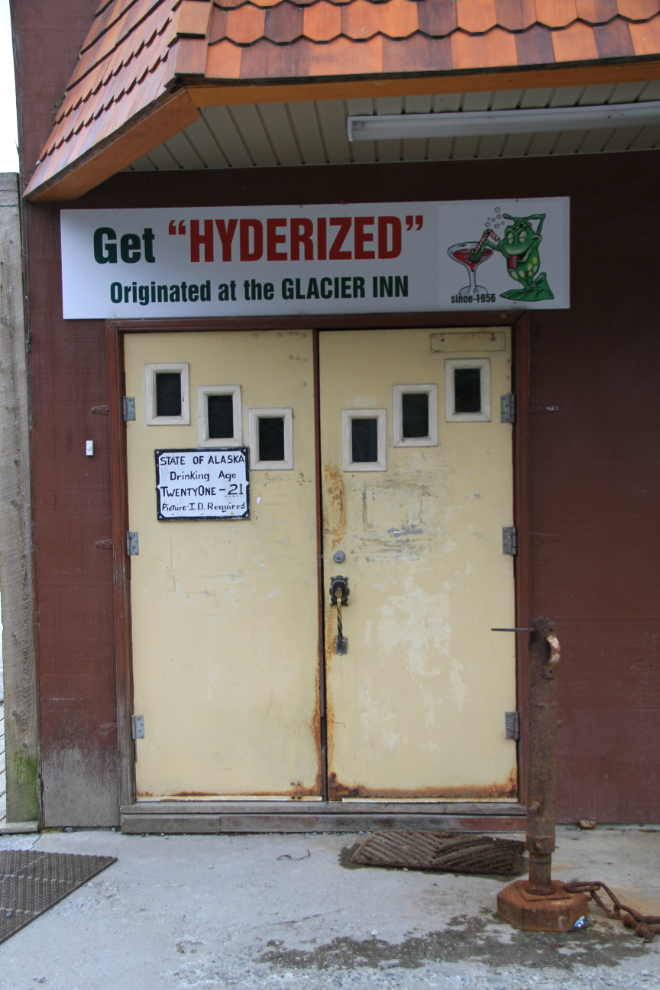
Looking back to Canada Customs as I left “The Friendliest Ghost Town in Alaska”.
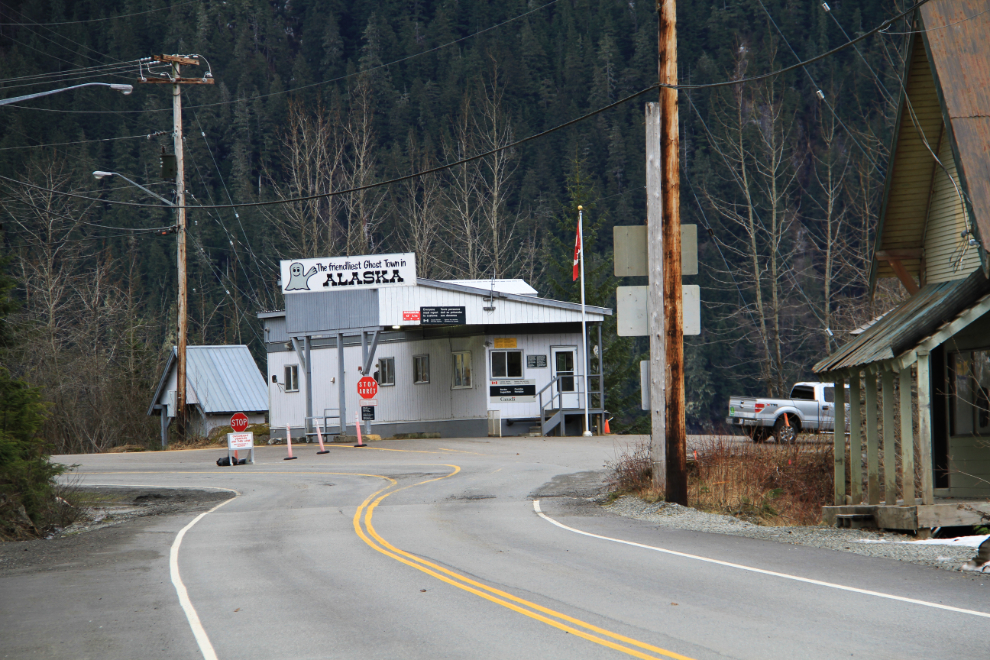
Back in Stewart at 5:30, I picked up my room key, which was in a basket outside the closed office as promised, dropped my suitcase in the room and went for dinner.
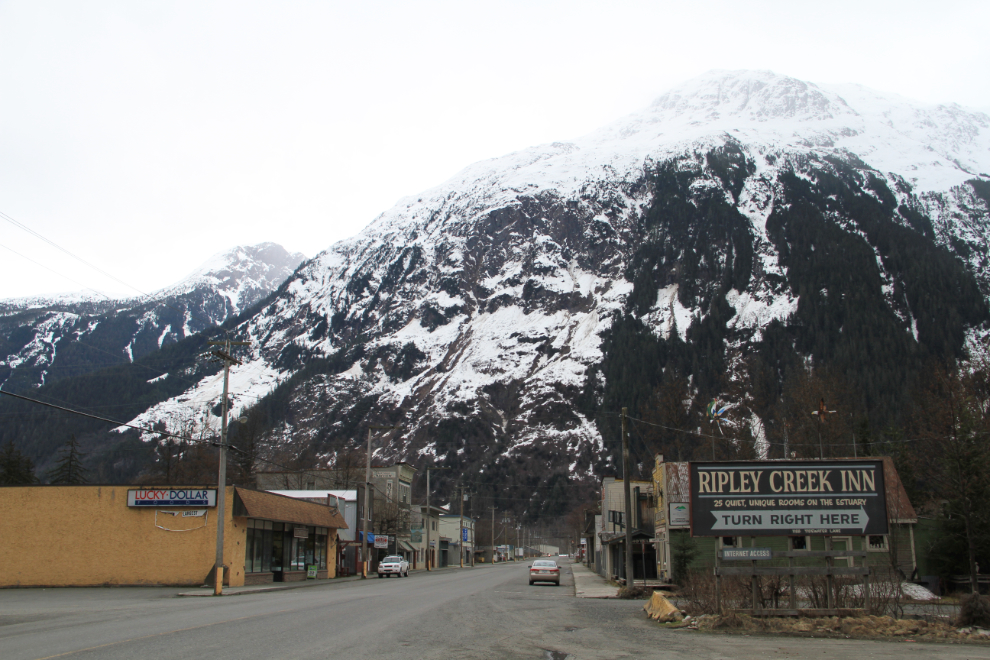
The choices for Easter Sunday dinner were limited – it was the King Edward Hotel, or the grocery store. The burger was very good, better than I remember them being when I lived at the hotel for a couple of weeks in 1975.
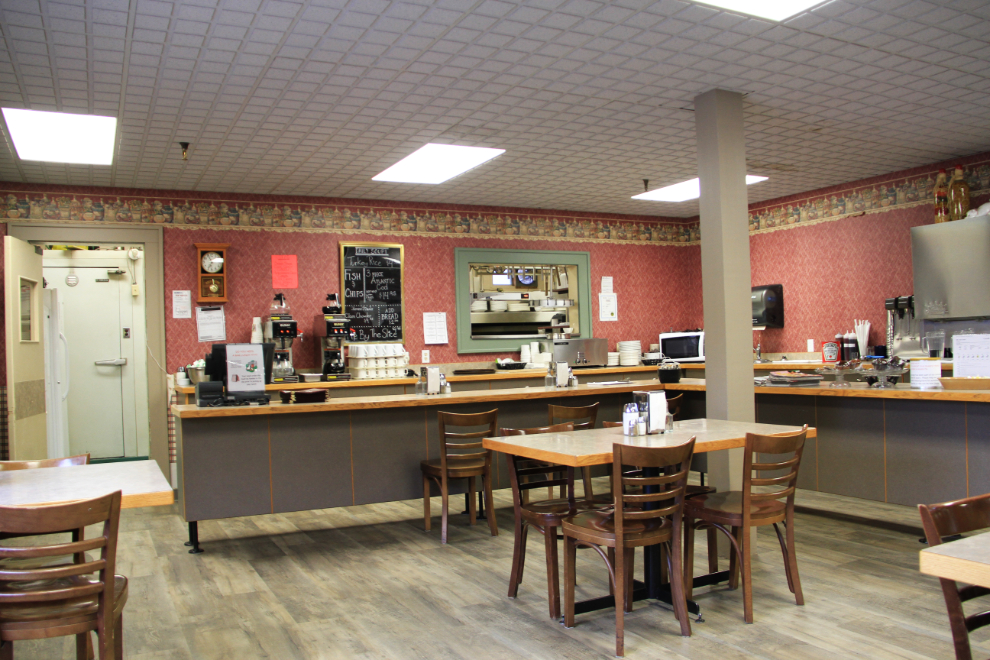
Back at the main lodge of the Ripley Creek Inn – there are quite a few buildings with restored rooms now.
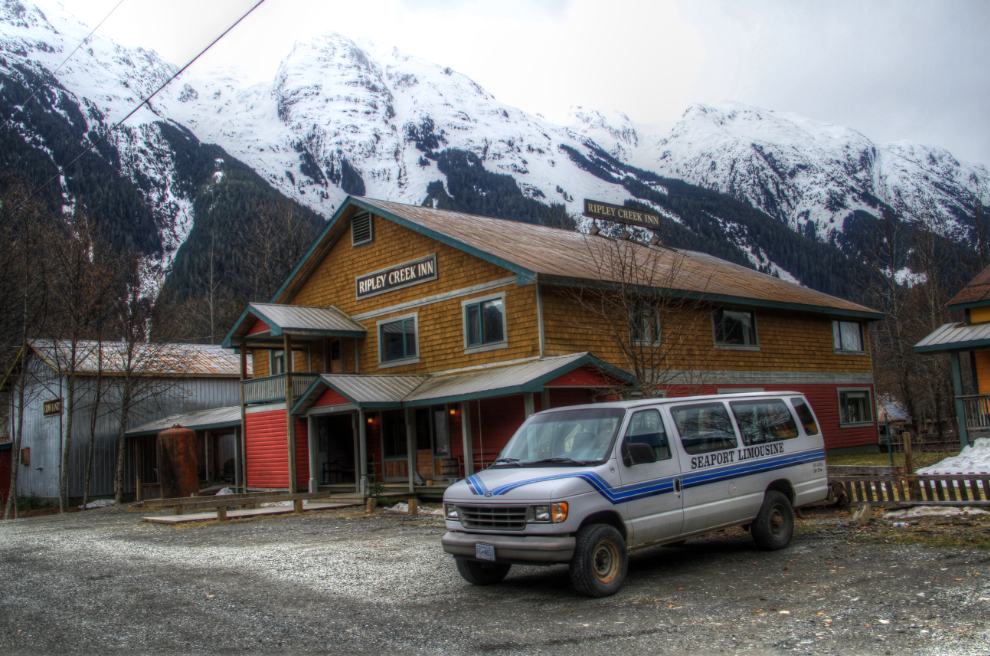
Here’s a unique bulldozer! The body is an early 1950s British estate wagon – a Hillman, Anglia or similar. The owners of the Ripley Creek Inn have a huge collection of old “stuff” that is parked, displayed or just stashed everywhere in and around the many buildings on the property.

This is the small private deck for Room 301 – a wonderful place to enjoy a beer.
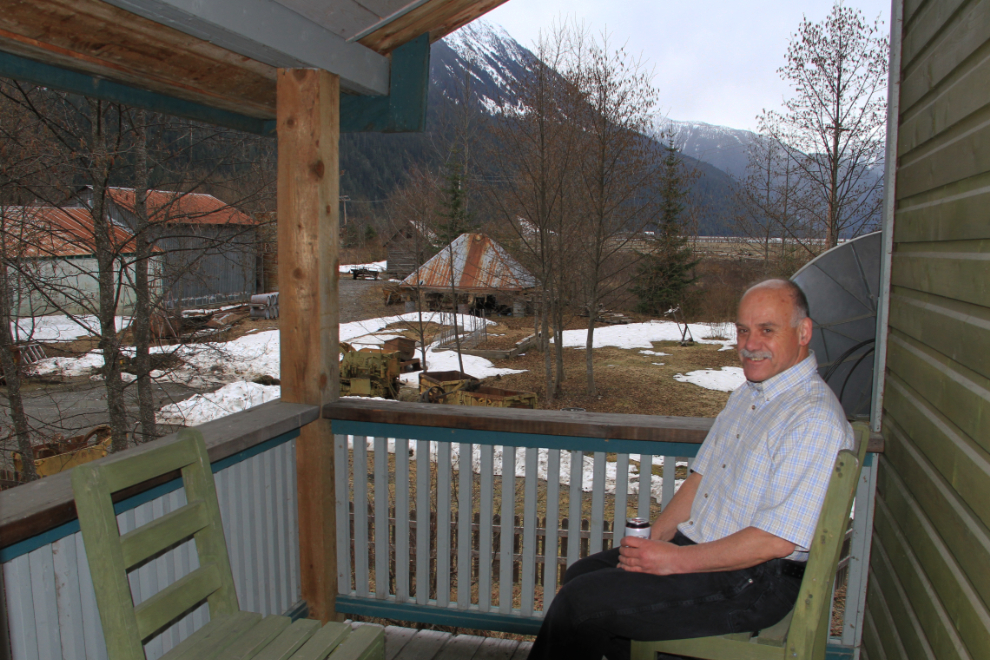
This short video will give you a better idea of what the room is like. I loved it.
This is the common lounge of the main lodge, beside my room on the second floor.
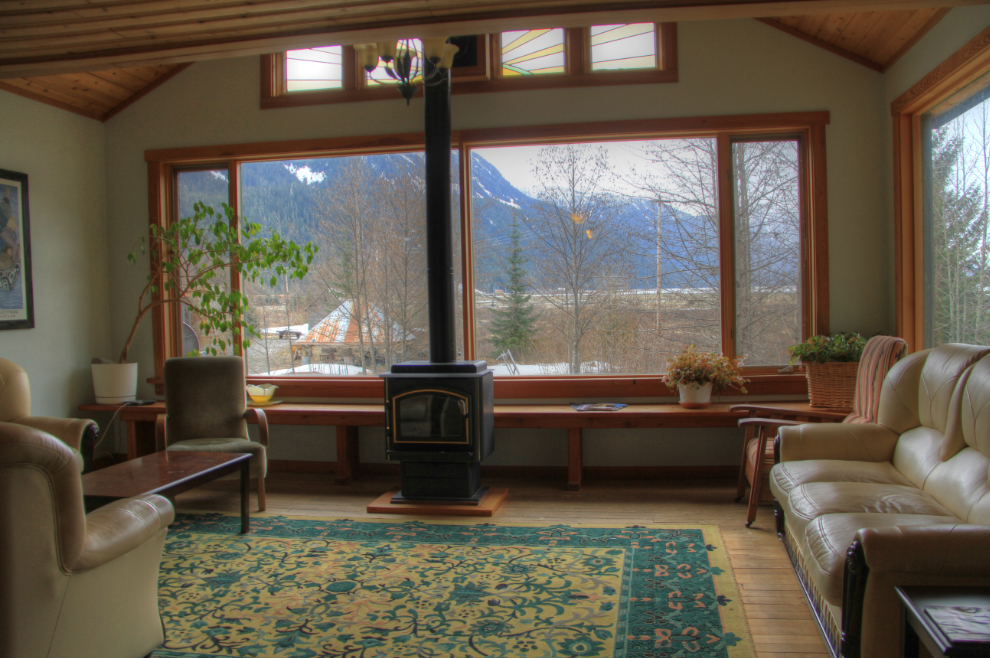
The finest of the historic buildings in Stewart is the former Bayview Hotel, built in 1925 by the Rapaich brothers from Yugoslavia. It was restored in 1994 and the ground floor now serves as the Bitter Creek Restaurant, probably the best restaurant in Stewart but only open in the summer.
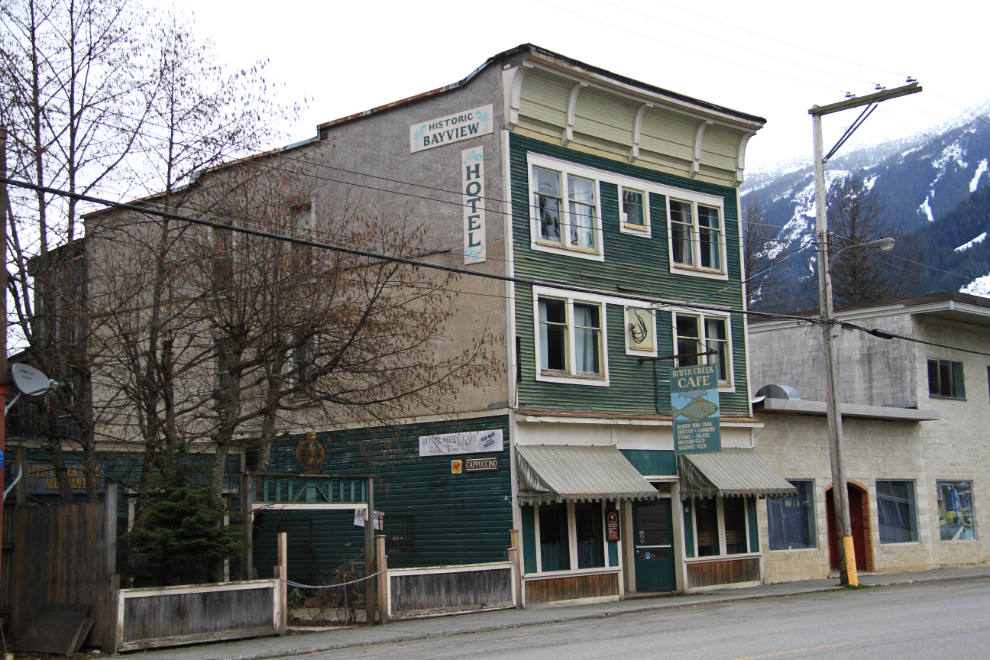
I really liked seeing mine haul trucks pounding through Stewart again. When no mines are operating, the town is far too quiet. There’s actually so much going on now that none of the locals I talked really had a good handle on the situation, and nobody seems to have tried a summary online yet.
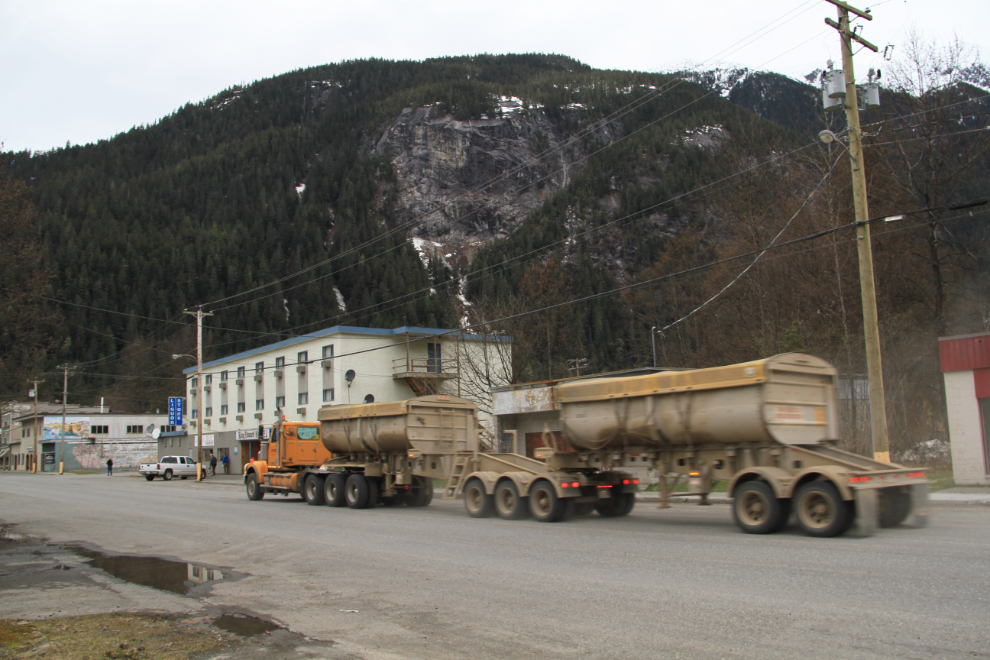
Built in 1910 as the fire hall and government office, this building and its grounds became the museum in 1976. It’s in rough shape now, though, due to wet rot, and the inside part of the museum was moved into the court house 2 years ago. The grounds to the left are still the home of many artifacts.
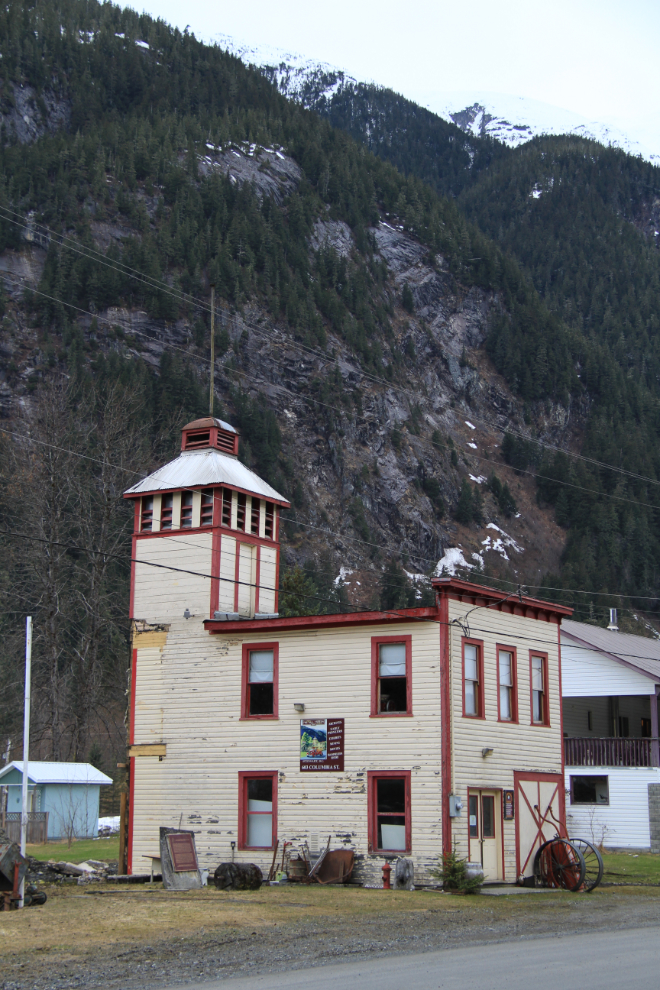
These two buildings are both part of the Ripley Creek Inn complex. I have no doubt that the rooms are really nice, as they all are, but it must be a shock to drive up to 🙂 These must be the latest additions, as the Web site doesn’t have any photos of the rooms yet.
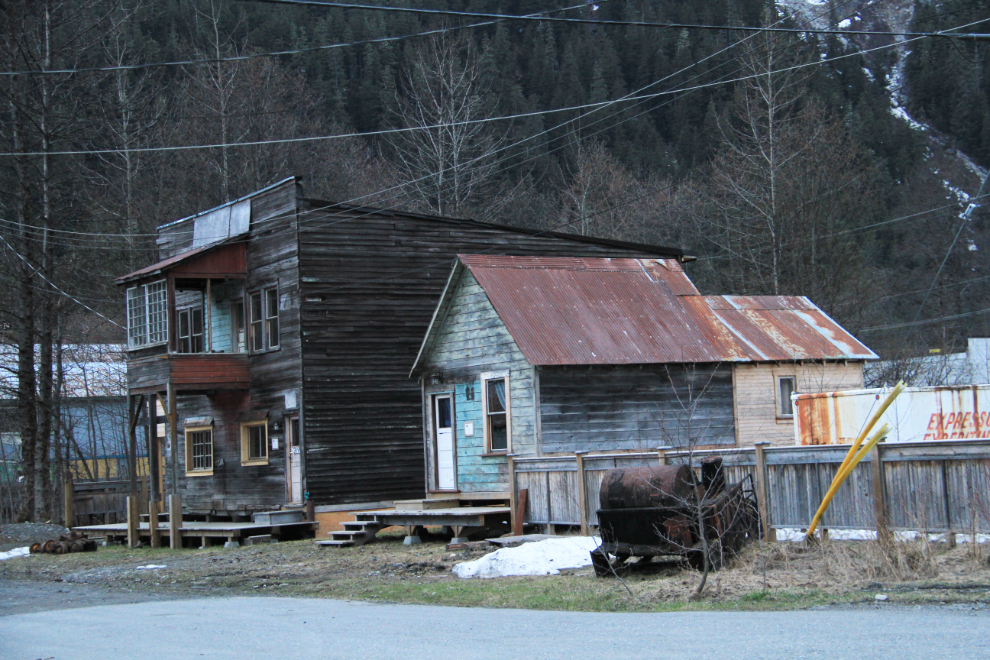
Just before 9:00 pm, I took a few last shots of the grocery store, went back to my room and was soon in bed, getting ready for the big push home on Monday.
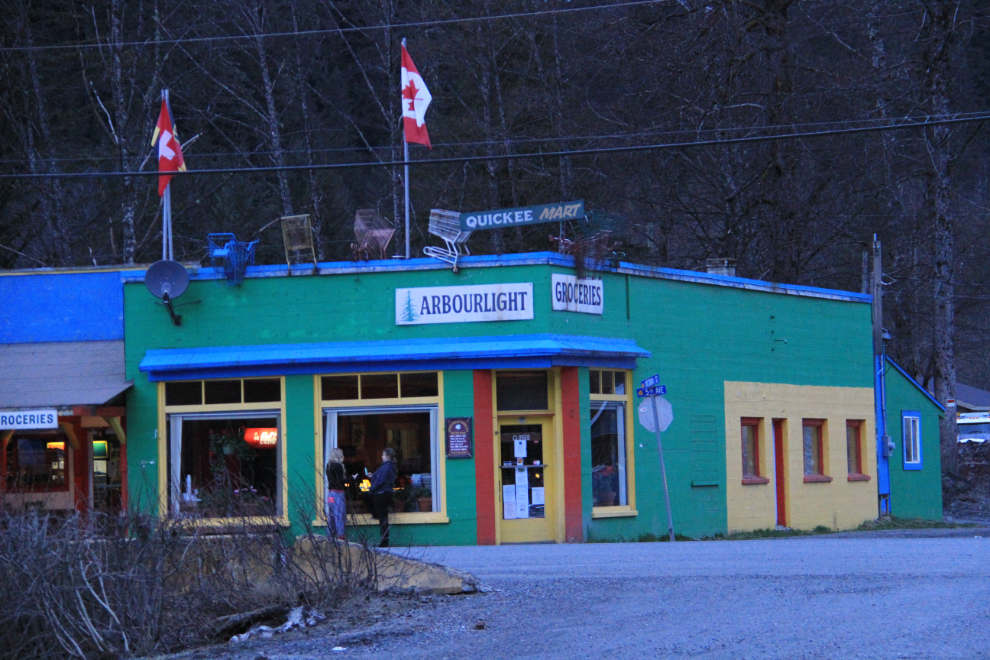
On Monday morning, I was back at the King Eddie for breakfast at 7:00 am, took a few more photos around town and was on the road before 8:00. I had a nag that I wasn’t finished with Stewart yet, though, so I only got about 10 km up the highway before turning around. There were 2 things I wanted to see yet – the estuary boardwalk and the toaster museum.
At the entrance to the boardwalk, I was surprised to find a monument to the 26 men killed in an avalanche during development of the Granduc mine on February 18, 1965. Death Came Silently: the Granduc Mine Disaster tells the story – this was one of the first stories I ever posted online, in 1998.
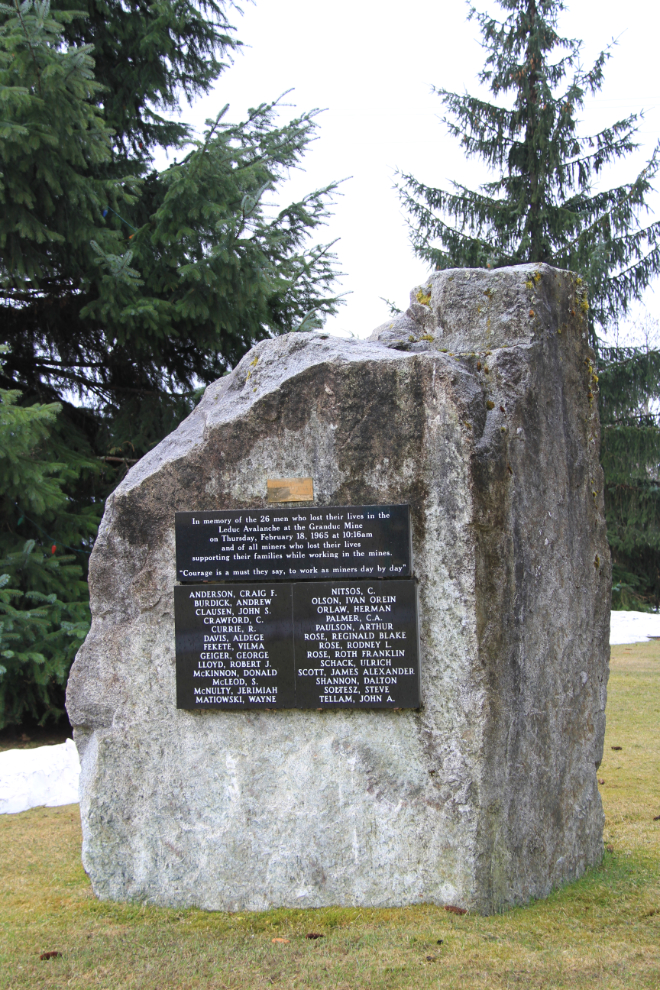
The boardwalk was a wonderful way to start the day. The views all around are amazing, and looking closer has lots of interest, from nurse logs to pilings from Stewart’s booming past.
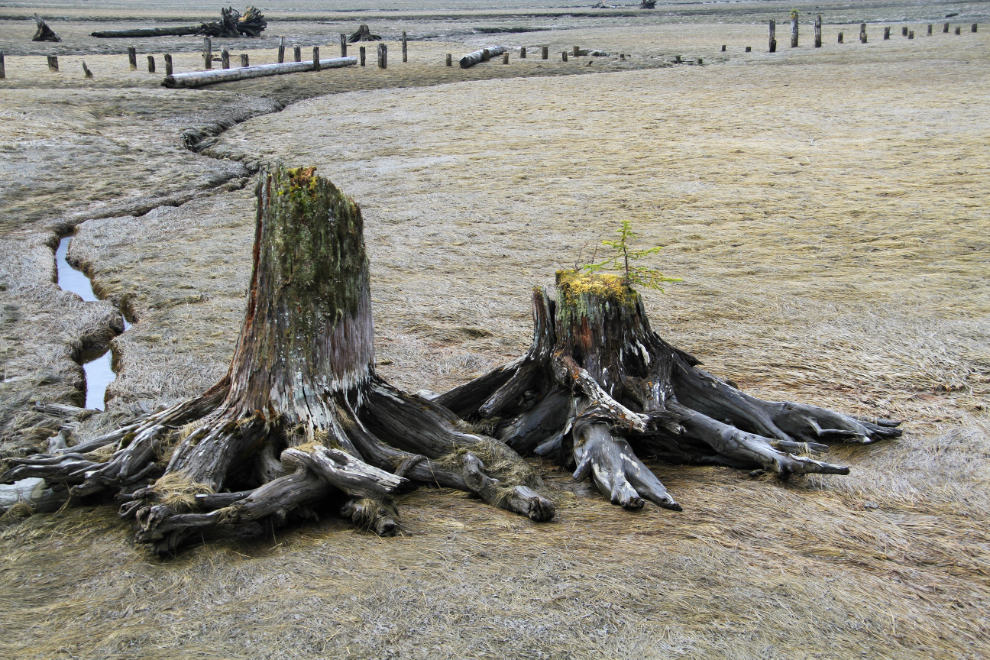
A video is a better way to share the feeling of the estuary boardwalk.
The Toastworks Museum, the main reason I turned around, was well worth the backtrack. I’ll tell you more about it in a future article.
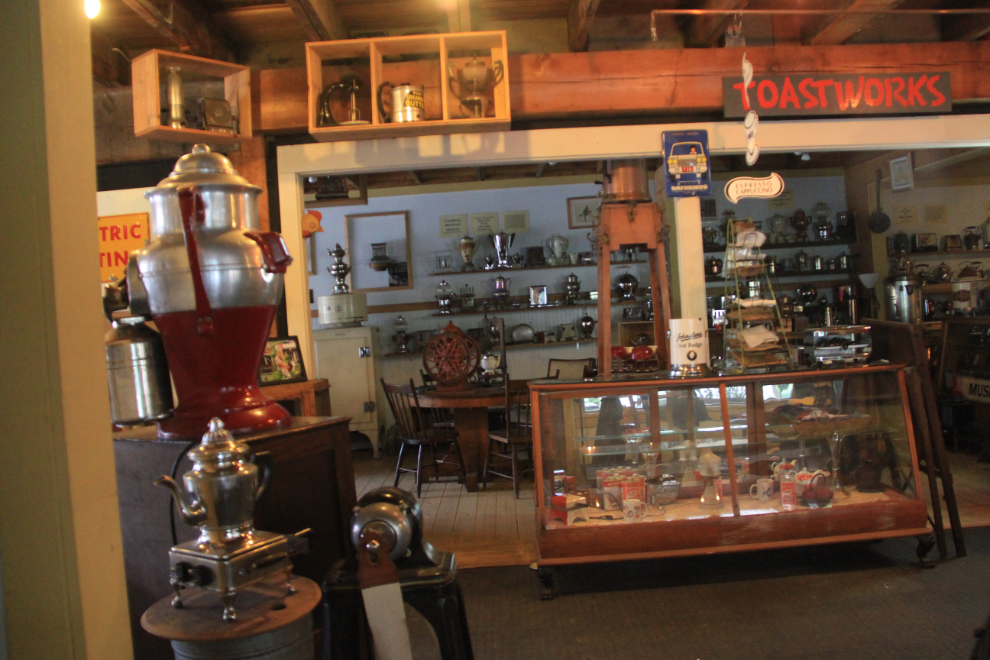
Now well satisfied with my visit to Stewart, I was back on the road just after 10:00 am. I didn’t have a game plan for the day – it would depend on the weather, what caught my interest along the route, and how tired I got.